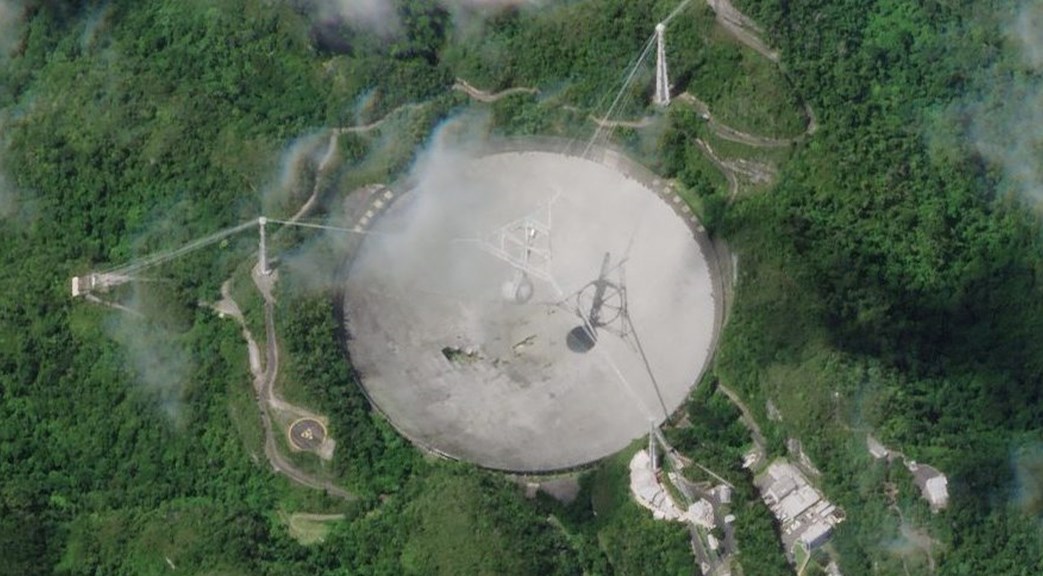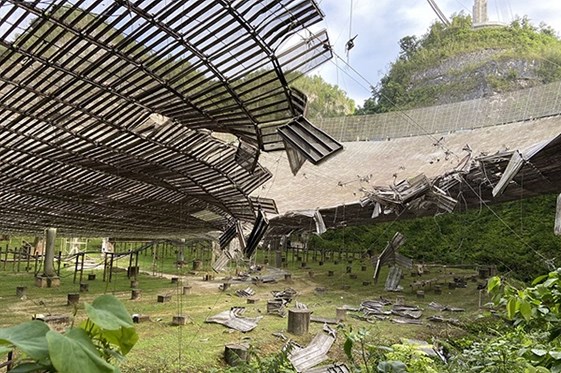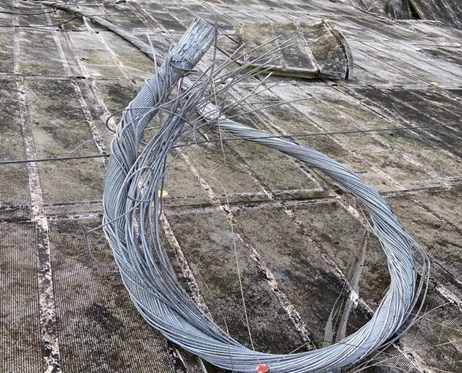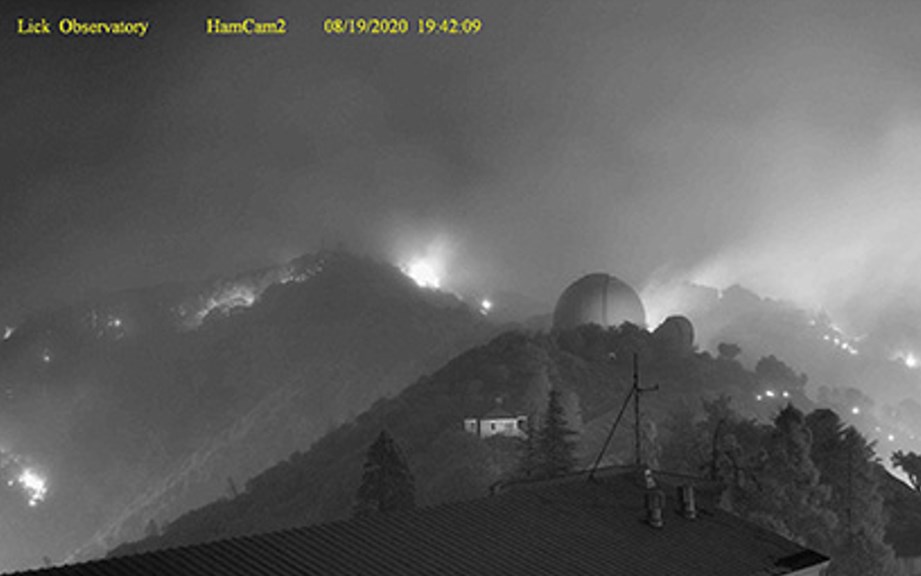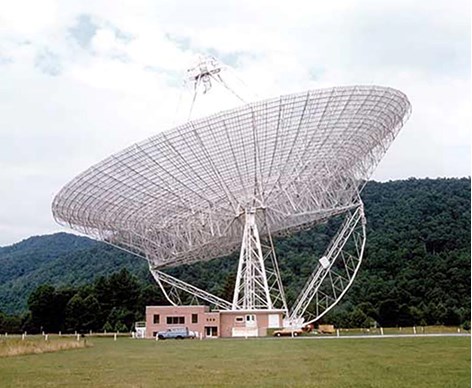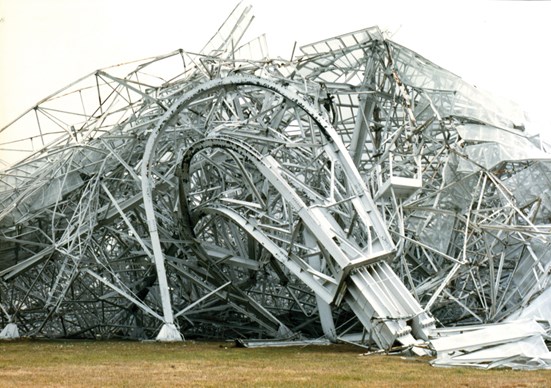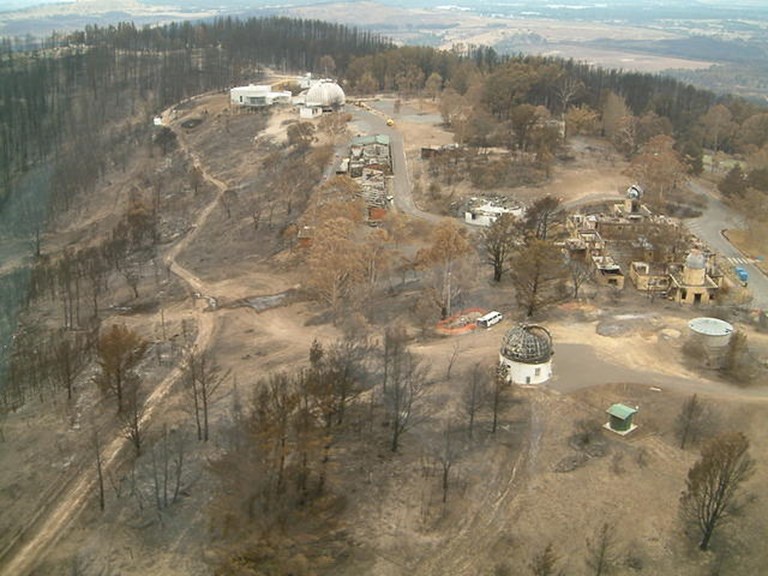Telescopes in Danger
You may think of telescopes as located safely on mountains or high altitude plains or in the far outback, and they are there for good reasons; to avoid radio interference or light pollution, for example, or to have clear dry air to observe the universe. But there can be danger too.
Many telescopes across the world are large, with ever larger ones planned or underway, but they can also be exposed to extreme elements like storm or fire, or can at times suffer catastrophic structural failure.
Here is a satellite view of the famous Arecibo Radio Telescope in Puerto Rico. It was repaired after suffering from Hurricane Maria in 2017, but just last month it was damaged when one of its auxiliary support cables broke loose from its anchor point on one of the telescope’s three towers.
Visible at lower left on the 304 metre dish is a dark ragged area – a 30 metre scar caused as the cable under high tension whiplashed across the mesh surface. Also damaged was the access platform and the outside of the movable geodesic unit (with houses critical detectors and transceivers), both hanging suspended at the telescope’s focus high above the dish.
Another telescope in the news last month was the well known Lick Observatory on Mt Hamilton, outside Santa Clara, California. Devastating wildfires have been sweeping through the area and fears were held that this 133-year old historic and active research telescope would be destroyed. In dramatic live coverage by media the spot fires and outbreaks can be seen threatening the telescope but it has survived this latest round of Californian wildfires.
A much older example of what can happen to large telescopes was the November 1988 collapse of the Green Bank Radio Telescope in West Virginia. A failure of a major structural component, a gusset plate connecting the steel structure together, caused its complete overnight destruction. Although since replaced this example reminds us that telescopes, especially large ones, can fail catastrophically should a key element give way. The larger the telescope the greater the potential risk.
And finally, we come home to Australia and remember how bushfires have struck two of the nation’s most significant and world-leading centres of astronomical observation and research.
In January 2003, Mt Stromlo Observatory west of Canberra was severely damaged as fire swept through the Australian Capital Territory. Telescopes were melted and buildings razed. While property and the work of astronomers and research projects were wiped out at Mt Stromlo, in the city nearby four lives were lost and over 500 homes destroyed.
And ten years later, in 2013, in another dangerous summer, bushfire again threatened. This time is was Siding Spring Observatory west of Coonabarabran, New South Wales. The iconic telescope and the many other instruments on the mountain came close to destruction as fire raged through the Warrumbungle National Park. The Visitor Centre, accommodation Lodge for astronomers, and a number of lesser building were destroyed but no telescopes were damaged apart from some smoke effects. In the wider region nobody died but over 50 properties were burnt out, large swathes of forest were destroyed, and there was significant loss of livestock and native animals.
For all the breathtaking images and marvellous insights they give us into the universe, like all major pieces of infrastructure, telescopes can be in danger. They can be damaged or destroyed depending on their condition and the forces of nature they may have to face.
Where are the major terrestrial telescopes and observatories?
They cover a wide range of the electromagnetic spectrum, not just optical and radio wavelengths, and are located in every continent, including at the South Pole in Antarctica.
Here's a 2009 world map from the Royal Astronomical Society of Canada. In 2020 it's in need of updating but it gives a good idea of how many there actually are.
